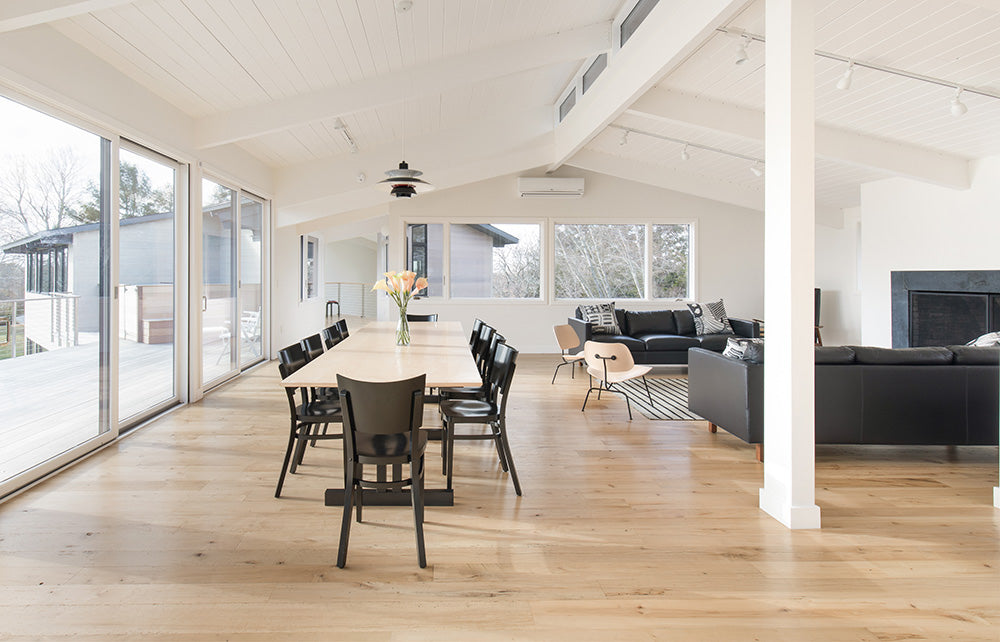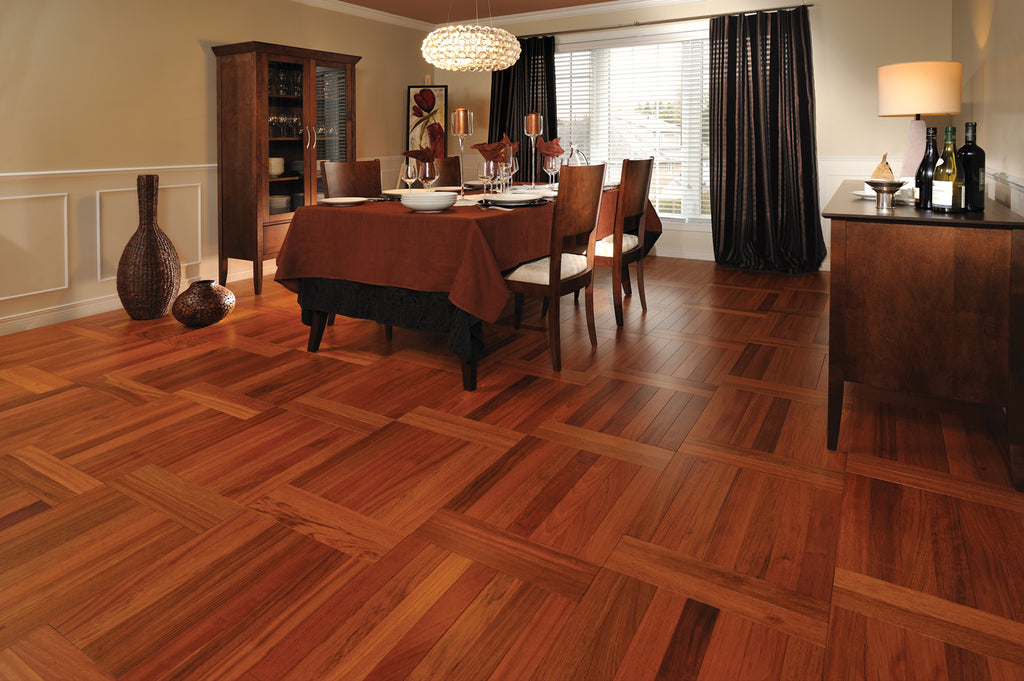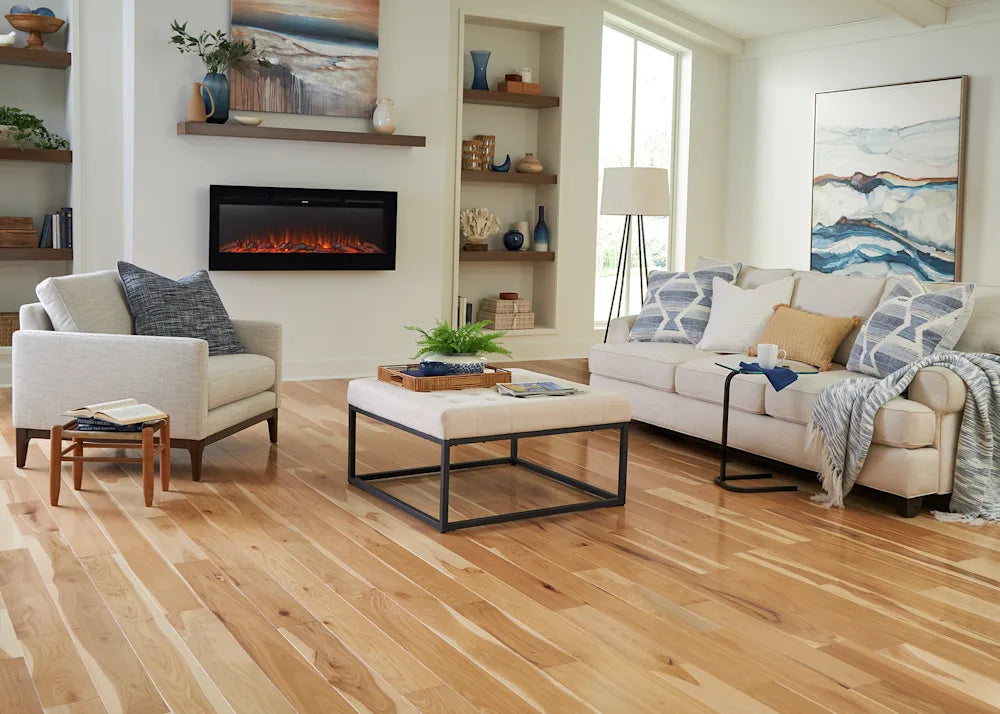Six Top Durable Hardwood Flooring Varieties Experts Recommend

Discovering the Pinnacle of Durable Hardwood Flooring: Six Varieties that Experts Vouch for in Terms of Robustness
For many homeowners, the choice of hardwood flooring goes beyond the allure of its colour, grain, or texture. While these attributes undoubtedly add to the flooring's visual appeal, its durability is paramount, especially if the goal is to ensure that the home exudes a fresh and well-maintained look for years to come.
Hardwood flooring, with its innate charm, has been a perennial favourite, consistently exuding warmth, sophistication, and a timeless aesthetic. Hardwood flooring stands as a testament to refined taste, merging both elegance and longevity. However, when committing to such an investment, it's imperative to foreground durability. This is because the flooring's resilience will determine its ability to gracefully endure daily wear, consistent footfall, the occasional spills, and the myriad environmental factors it's subjected to.
Given the myriad of hardwood flooring options available in the market, discerning the most durable ones can be quite the endeavour. Hence, in the quest to streamline your decision-making, we've sought the insights of leading designers and flooring experts. Here's a curated list of the hardwood flooring types that come with their stamp of approval for unmatched strength and longevity.
UNRAVELLING THE SECRETS OF HARDWOOD DURABILITY: A COMPREHENSIVE GUIDE
Before delving into the specifics of the most enduring hardwood floorings available, it's pivotal to have a clear grasp of how the longevity and resilience of a chosen wood are ascertained. The resilience of hardwood flooring, as many experts will attest, isn't a singular dimensional attribute. It's influenced by a myriad of crucial factors. The spectrum of durability for hardwood flooring is vast, with each type of wood showcasing varying levels of robustness.
A quintessential tool in this evaluation is the Janka hardness test. This method is the industry gold standard when it comes to determining a wood's mettle against external adversities like denting, wear, and the daily rigours of foot traffic. In essence, the Janka test rates the wood's resistance to potential damage. A wood that boasts a higher Janka rating is indicative of its enhanced hardness and, by extension, durability.
Yet, it's not just about the hardness. While some hardwoods are inherently adept at handling the hustle and bustle of high-traffic zones, others might be more attuned to areas that see less frequent movement. And beyond the intrinsic qualities of the wood, external factors come into play. The region's climate and specific environmental conditions play a determinative role in the wood's lifespan. For instance, certain wood types have an innate defence mechanism against moisture and pests. This makes them particularly suited for places susceptible to such challenges, including bathrooms or exterior settings.
DEEP DIVING INTO THE IMPACT OF HARDWOOD FINISHES ON DURABILITY
When deliberating on the choice of hardwood flooring apt for one's interiors, the focus often rests primarily on the type of wood. However, an equally critical aspect that shouldn't be overlooked is the finish applied to the wood, which significantly influences its longevity and overall aesthetic.
Hardwood, in its raw form, possesses inherent beauty. Still, it's the finish that not only amplifies this beauty but also lends additional strength to the wood. Certain finishes permeate deep into the wood's pores, thoroughly saturating it, thereby fortifying the wood from within and enhancing its robustness.
It's imperative to recognise that the finish isn't just an aesthetic choice. It forms an integral component in determining the wood's resistance to external pressures. Finishes such as polyurethane, aluminium oxide, and tung oil are exemplary in this regard. They don't just embellish the wood's surface but provide a formidable protective shield against the everyday wear and tear.
To truly maximise the durability of hardwood flooring, one should not just stop at choosing the right finish. Consistent maintenance, which encompasses periodic cleaning and the occasional resealing or refinishing, is indispensable. Furthermore, it's vital to assess the intended function of the room and the anticipated foot traffic it will receive. This assessment will guide in making an informed decision on both the hardwood and the finish to opt for.
EXPLORING THE INTRICACIES OF HARDWOOD FLOORING: A DEEPER LOOK INTO OAK, MAPLE, AND BAMBOO
1. OAK

Set against the backdrop of a lavishly adorned dining room, oak flooring never fails to catch one's eye. Historically championed for its enduring hardness, oak's classic elegance and simplicity in repair make it a universally beloved choice amongst homeowners. What adds to oak's charm is its ability to develop an unmistakable patina over the years, enhancing its visual appeal.
Oak is not only robust and durable but also imbues spaces with a warm, comforting embrace underfoot. It predominantly comes in two variants: the red oak and the more robust white oak. However, as is the case with most wooden floorings, fluctuations in temperature and humidity levels can cause oak to warp, expand, or contract. This, in turn, may lead to creaky floors or even cracks if not diligently maintained.
2. MAPLE

Maple, with its inherent strength and ability to absorb shocks, stands out as a superior choice for homeowners. Its resistance to daily abrasions coupled with its light, airy grain pattern offers an inviting atmosphere.
When we speak of resilience and visual allure, hard maple certainly tops the list, especially in areas with heavy foot traffic. This particular wood type surpasses oak when tested for hardness using the Janka scale. Moreover, the natural creamy hue of maple provides a blank canvas, making it amenable to a diverse range of stains.
However, there's a caveat to its beauty. Prolonged exposure to sunlight can lead maple flooring to fade and even adopt a slight yellowish tint over time.
3. BAMBOO

Breaking conventional norms, bamboo emerges as an eco-friendly flooring choice suitable for diverse home styles. Contrary to popular belief, bamboo isn't wood; it's a grass species. Yet, it mirrors the durability and vigour typically associated with wood. Its dimensional stability ensures it withstands varying climatic conditions seamlessly, and its versatile aesthetic appeal is found in a plethora of colours and designs.
The sustainability of bamboo flooring, given its rapid growth as a wild grass globally, is a prominent draw for eco-conscious individuals. Bamboo is resilient and pliable, but potential buyers should be aware that its production requires extensive processing, which might be a point of contention for some.
4. BRAZILIAN CHERRY

Known for its distinguished red hue, Brazilian Cherry flooring unmistakably captures the essence of antiquity and charm. With its delicate, linear grain pattern, this robust and shock-absorbent wood floor is a nod to times gone by, predominantly gracing the interiors of heritage properties, upscale resorts, and quaint vintage cabins.
Given its impressive strength and density, Brazilian Cherry is a wood type that stands the rigours of time. With the ability to be sanded and refinished multiple times throughout its life, it promises durability and longevity. When considering its upkeep, maintaining its pristine condition is straightforward; a simple vacuum suffices, ensuring it retains its elegance without showing signs of wear and tear with ease.
Brazilian Cherry has been a mainstay in many households for ages due to its enduring nature. While it may be slightly softer compared to some other hardwoods, making it susceptible to minor dents, its distinct colour can be somewhat limiting in terms of adaptability to changing interior styles.
5. ASH WOOD

Exuding softness underfoot, Ash stands out for its unparalleled comfort. Its subtle grain pattern lends itself beautifully to contemporary homes, bringing with it a touch of modern elegance. Highly resilient to varying temperatures and humidity levels, Ash wood is particularly suited for expansive spaces. As a bonus, it boasts simplicity in maintenance. When placed in arid regions, its upkeep demands are minimal, ensuring longevity with little effort.
6. HICKORY

Hickory wood, with its innate ability to magnify the radiance of natural light, serves as a sophisticated addition to any room. Renowned for its exceptional hardness, it resists impacts, damages, and even staining better than many of its counterparts. Regular waxing can enhance its resistance to moisture, making it an ideal candidate for areas like kitchens or bathrooms.
While Hickory undoubtedly ranks among the top in terms of durability, it's essential to understand that the longevity of hardwood flooring doesn't rest solely on its hardness. Various factors, including the finish, upkeep, intended use, environmental conditions, and even budget constraints, play pivotal roles. It's by judiciously evaluating these aspects that one can truly invest in hardwood flooring that not only amplifies the aesthetic appeal of a space but also promises enduring value and unparalleled comfort.
- Harold King

Comments 0